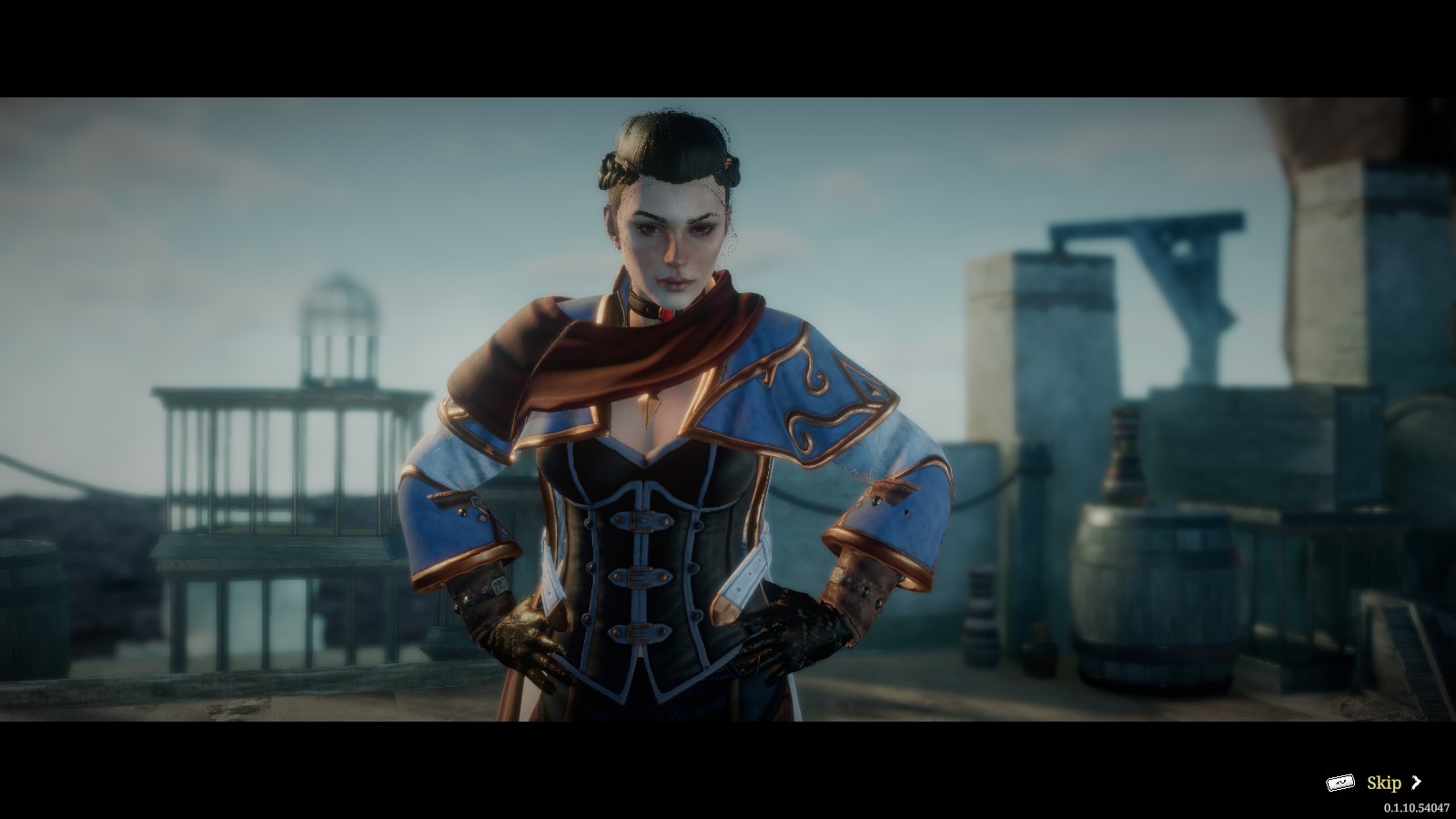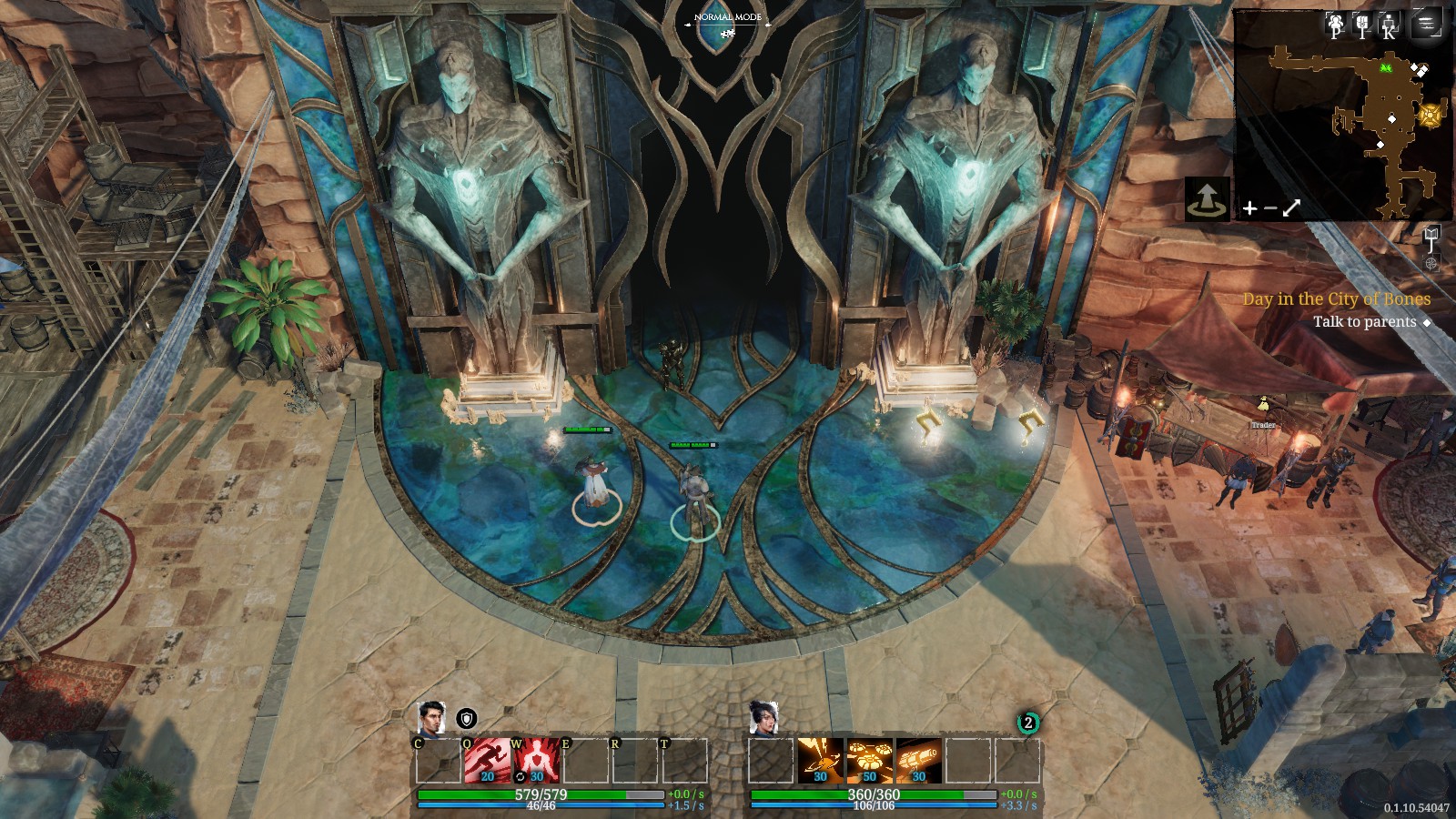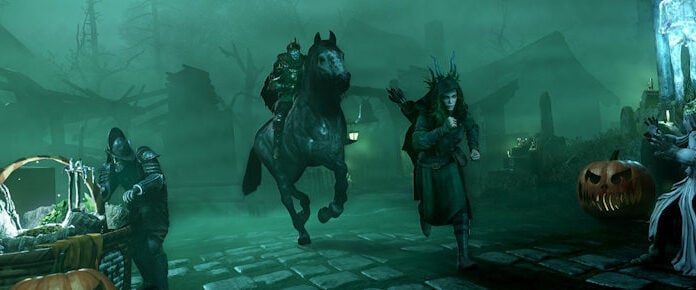
A while back I stumbled across the Steam page for co-op CRPG Dark Envoy and had the thought it could be fun to play with a gamer friend of mine. I’ve kept it on my wishlist ever since, and when developer Event Horizon offered Massively OP a demo code ahead of the demo’s public release, I jumped at the chance.
It was with both excitement and trepidation that I entered Dark Envoy‘s demo. CRPGs are one of those genres I really like in theory but rarely in practice.
On the one hand, I like how story-driven CRPGs tend to be. I’m also a big fan of the fact they tend to be party-based. I think controlling a full party of characters rather than just one is much more exciting. Commanding a whole squad is such a power rush, and who doesn’t love some good party banter?
On the other hand, I find gameplay and especially combat can feel like a chore in most CRPGs. Things like turn-based combat and deciding everything with dice rolls make sense in a table-top setting, but when I’m playing a video game, I want something more dynamic and immersive.
Like a lot of modern CRPGs, Dark Envoy offers the choice of real-time combat or a slowed down “tactical mode” that gives you much more time to react to the battlefield. (The Steam page mentions a full pause option as well, but I didn’t notice that in my playthrough of the demo. It’s possible I simply missed it; since I prefer real time combat anyway, I wasn’t strongly motivated to dig for a pause option.) In my experience, though, the real-time mode offered by such games tends to feel half-baked at best, so this didn’t reassure me very much.

What did perk up my interest was a pop-up on log-in offering a choice between RPG or RTS controls. I may be lukewarm to traditional CRPGs, but I love me some RTS, so I immediately enabled that mode.
The RTS control scheme isn’t wildly different from what you’d find in a typical isometric RPG, but the RTS DNA is visible. Left click to select a character, right click to command them, abilities bound to letter keys, and so on.
While the difference may have been small, it was enough to put me in my RTS brain, and I found myself enjoying the gameplay much more than I usually do in games of this sort. The ease of swapping between characters and the need to plan a strategy for the whole party rather than just one character felt much more like playing one of the dungeon crawl missions in Warcraft III — for me, that’s a good thing, though your mileage may vary.
I found I could get by well enough without using the tactical mode, though it definitely seems as if you’ll need it if you want to play on the highest difficulties. I also have my doubts about how viable sticking to real-time will be at higher levels when you’ve unlocked more abilities and party members.
I think it would take away what makes Dark Envoy unique if you could fully automate the party members you’re not currently controlling, but I would like it if the AI was a bit more self-sufficient than it is. As it stands, your party members will auto-attack, and that’s about it. Anything else requires direct intervention from the player. Some abilities have an auto-cast option, but it just makes them activate the ability in question any time it’s off cooldown, even if you’re not in combat.
This is one area where I could see co-op being a real boon. I only played the demo solo, but I imagine that having a second player to help manage your party could really help make it more manageable.

I suspect this mix of RTS and RPG gameplay could be divisive, but right now the biggest problem I see facing Dark Envoy is its severe lack of polish. I didn’t encounter any serious, game-breaking issues, but a certain level of jank permeates the entire game.
Most frustratingly, the controls didn’t seem entirely reliable. I’m not sure if they were genuinely bugged or if they just required more precision than my flailing combat style would allow, but I often found that I hadn’t swapped characters when I thought I had or that abilities I’d activated weren’t firing for nebulous reasons.
Nothing feels quite right in Dark Envoy. Even the character animations are often stiff and awkward. One could blame its lack of polish on the fact this is a pre-release demo, and hopefully the launch version will be better, but in my experience if a game is this janky during a public demo, it’s unlikely to change that much by launch.
Like the rest of the game, the story has potential but is definitely rough around the edges, at least from what I saw. The central conflict of the setting is between a technologically advanced human empire and an alliance of more ancient races who rely on magic. In the middle of this conflict are sibling protagonists Malakai and Kaela, adventurers from a neutral frontier city.
The “magic vs. technology” angle isn’t wildly original, but it still has potential. I enjoy the hint that humans in this setting could be refugees from another world, and I hope the main story explores that more deeply — what were they running from? I also enjoy the sibling dynamic of the two lead characters. Again, it’s not super original, but I like having characters with pre-established histories and relationships. It makes them feel more like real people.
But again, the lack of polish can be an issue with the story, too. The dialogue can be a bit shaky at times, and the quality of the voice acting is wildly inconsistent. Malakai and Kaela’s acting is competent enough, but one other major character sounded like they pulled some rando off the street and had him mumble his lines into the mic.

All in all, Dark Envoy‘s demo feels largely inconsistent. It very much has that indie game feel, in both positive and negative ways. Normally I find I can tell if I’m going to like a game with a fair degree of accuracy within the first hour or so, and yet after spending about two and a half hours in Dark Envoy‘s demo, I still don’t know what quite what to make of it. But I do find myself wishing the demo were longer, so maybe that’s a good sign.
 The world of online gaming is changing. As the gray area between single-player and MMO becomes ever wider, Massively OP’s Tyler Edwards delves into this new and expanding frontier biweekly in Not So Massively, our column on battle royales, OARPGs, looter-shooters, and other multiplayer online titles that aren’t quite MMORPGs.
The world of online gaming is changing. As the gray area between single-player and MMO becomes ever wider, Massively OP’s Tyler Edwards delves into this new and expanding frontier biweekly in Not So Massively, our column on battle royales, OARPGs, looter-shooters, and other multiplayer online titles that aren’t quite MMORPGs.














